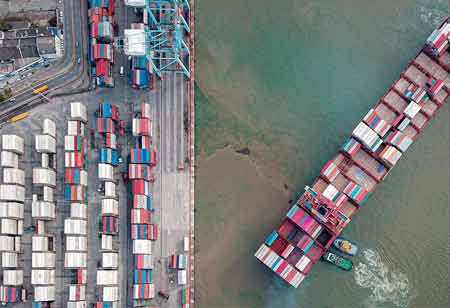THANK YOU FOR SUBSCRIBING
THANK YOU FOR SUBSCRIBING

By
Logistics Transportation Review | Thursday, November 07, 2024
Stay ahead of the industry with exclusive feature stories on the top companies, expert insights and the latest news delivered straight to your inbox. Subscribe today.
Supply chain automation involves using current technologies to automate operations that were previously manual. This streamlines procedures and improves overall efficiency. Warehouse robotics, IoT, and AI are among the technologies deployed.
Fremont, CA: Digital transformation, such as automation, is making it easier to do a wide range of tasks, including inventory control, order processing, and logistics. As a result, workplace productivity rises while errors fall dramatically.
Similarly, workers are becoming more conscious of the importance of being taught about emerging technologies like generative AI (Gen AI) to enhance corporate development.
Keeping this in mind, below are some of the world's leading supply chain innovations.
Blockchain
Blockchain technology is an improved database technique that enables transparent information sharing across a business network. It can be utilized in the supply chain industry to assist businesses in better understanding their supply chain and, hence, engage their customers with reliable data.
Using blockchain technology in the supply chain helps increase communication among stakeholders by sharing datasets and eliminating the need for an intermediary to coordinate.
It can also help to increase supply chain transparency and lower administrative costs.
Cloud
Traditional supply chain solutions rely on relatively manual procedures to manage logistics, inventory management, replenishment, and warehousing operations. Using the cloud, supply chain managers may automate these processes and use data analytics to make better and more informed decisions throughout the supply chain.
Similarly, cloud-based supply chain management has numerous advantages, such as increased real-time data visibility, streamlined logistics, greater stakeholder cooperation, and overall operational efficiency.
Predictive Analytics
Predictive analytics can be used for various applications, such as forecasting demand, optimizing inventory levels, and identifying possible bottlenecks. Using advanced algorithms, predictive analytics enables supply chain managers to determine exact inventory requirements by area, location, and usage.
Similarly, predictive maintenance can help reduce rising expenses by increasing performance awareness and lowering downtime. It can also assist an organization in improving forecasts, identifying inefficiencies, responding better to client needs, driving innovation, and pursuing breakthrough ideas.
Robotics and Automation
Supply chain automation involves using current technologies to automate operations that were previously manual. This streamlines procedures and improves overall efficiency. Warehouse robotics, IoT, and AI are among the technologies deployed.
Its ultimate goal is to replace manual jobs with technologies without human intervention.
Supply chain management uses robotic process automation to automate low-value jobs, streamline operations, and eliminate human errors. Robotics can help supply chains scale more quickly and fulfill demand as they grow.
Machine Learning
AI and machine learning technologies transform supply chain management in various ways and across multiple domains.
For example, machine learning can automate warehouse operations and minimize manual errors that cause delays or missing shipments in the supply chain. Similarly, it may automate mundane processes like picking, sorting, and palletizing goods, freeing up human labor for more difficult jobs.
It can also provide information on inventory levels, product availability, shipment times, and fulfillment rates.
I agree We use cookies on this website to enhance your user experience. By clicking any link on this page you are giving your consent for us to set cookies. More info





